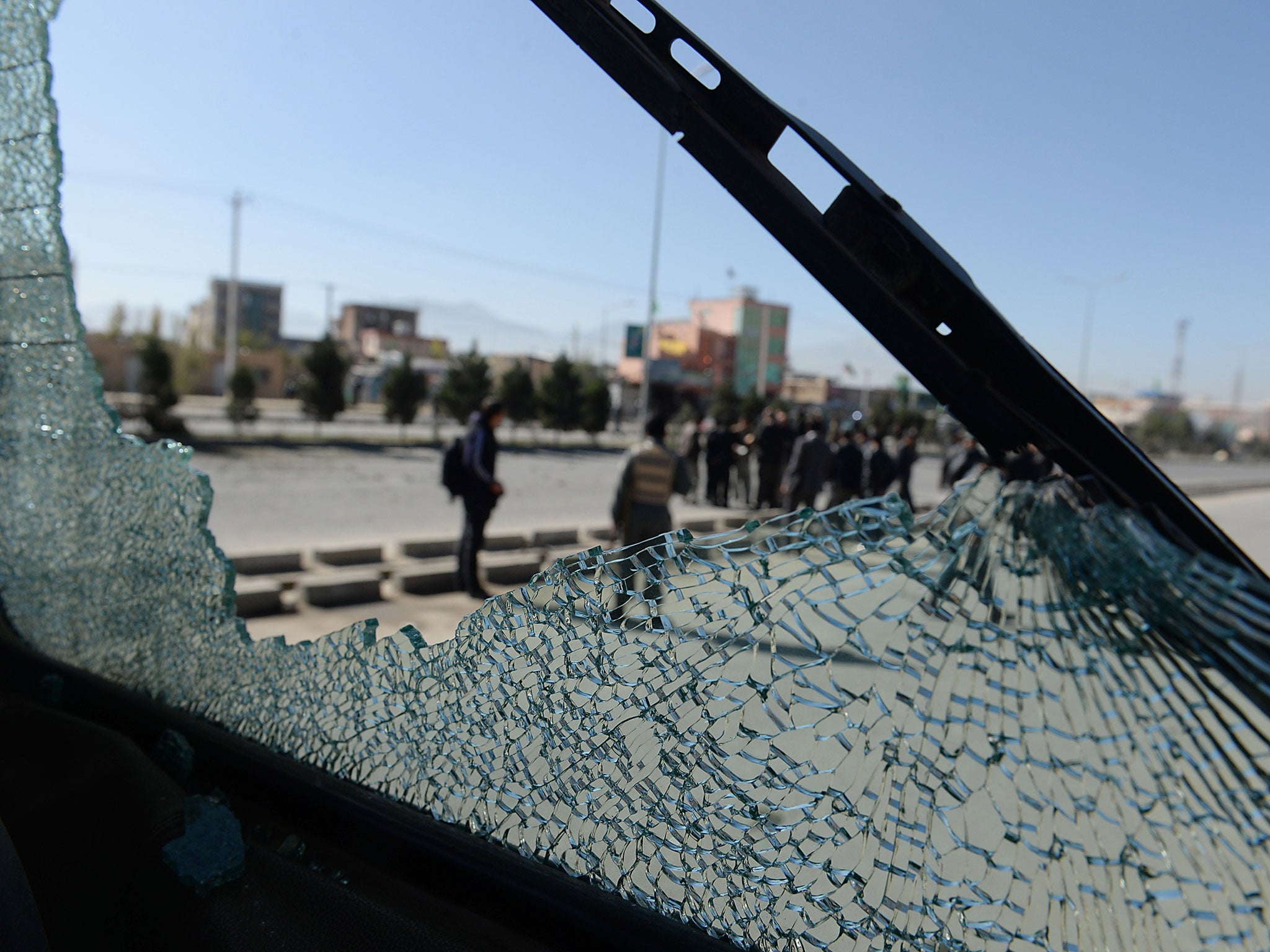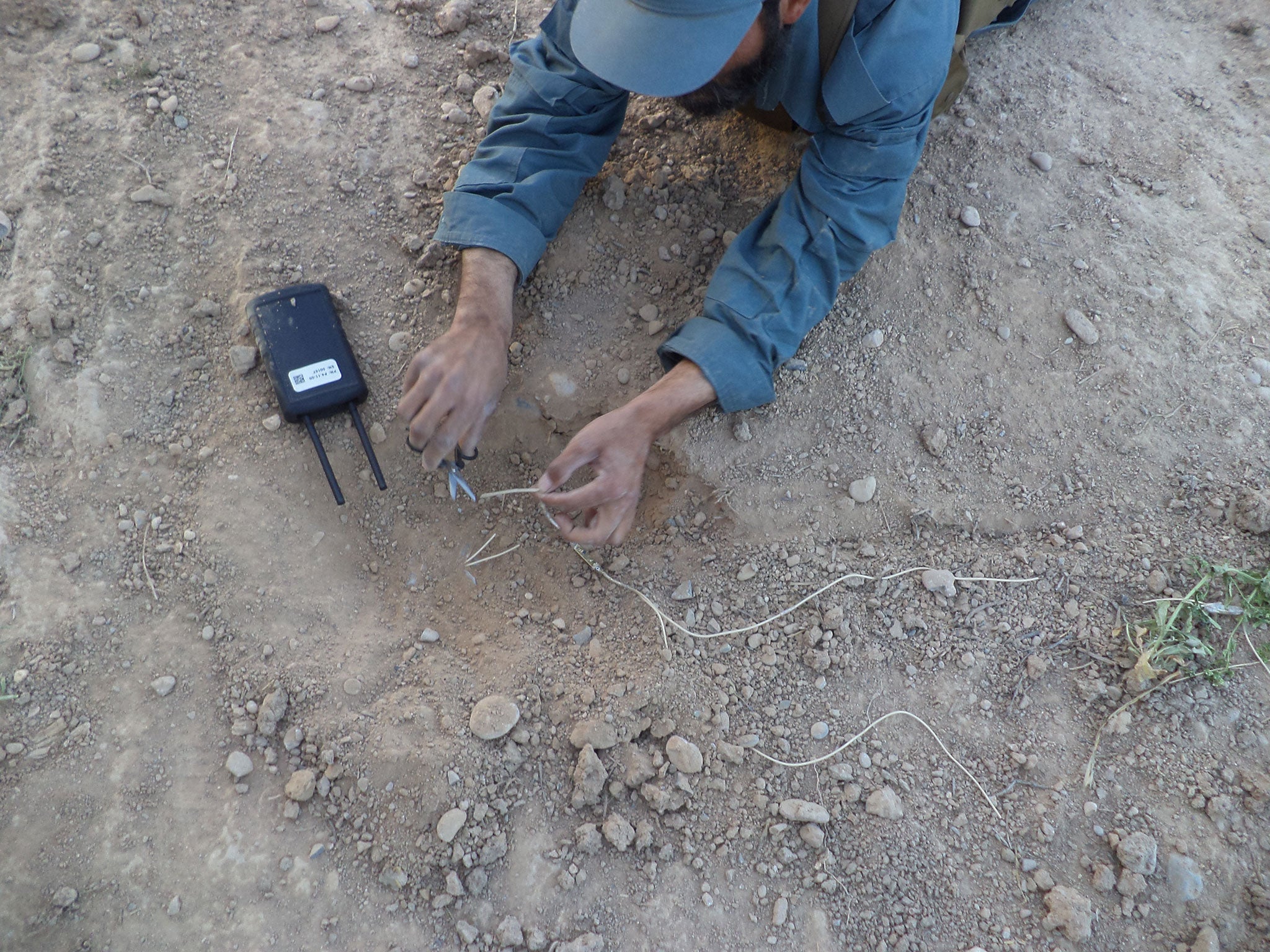The war in Afghanistan is over, but the battle against the Taliban - and their IEDs - goes on
As the US and Nato formally declare an end to their 13-year mission, an Afghan bomb-disposal expert is carrying on the fight

Your support helps us to tell the story
From reproductive rights to climate change to Big Tech, The Independent is on the ground when the story is developing. Whether it's investigating the financials of Elon Musk's pro-Trump PAC or producing our latest documentary, 'The A Word', which shines a light on the American women fighting for reproductive rights, we know how important it is to parse out the facts from the messaging.
At such a critical moment in US history, we need reporters on the ground. Your donation allows us to keep sending journalists to speak to both sides of the story.
The Independent is trusted by Americans across the entire political spectrum. And unlike many other quality news outlets, we choose not to lock Americans out of our reporting and analysis with paywalls. We believe quality journalism should be available to everyone, paid for by those who can afford it.
Your support makes all the difference.The war is over, victory secured. And Afghanistan, once again, has been rebuilt. But for many, life in the restive provinces is much as it ever was. The Taliban are a rampant force. The government’s authority is limited, at best.
Today saw the US and Nato formally end their war in Afghanistan with a ceremony in Kabul. With it came a new name for the mission in Afghanistan – Operation Resolute Support.
That support will, said General John Campbell, commander of the US-led International Security Assistance Force, serve as the “bedrock of an enduring partnership” between Nato and Kabul. From New Year’s Day, the mission will be to provide training and support for the country’s military. It is needed. As the conflict enters a new phase, the Taliban have, in turn, adapted. And roadside bombs – easy to assemble, easier to hide and costing a fraction of other weapons – are the Taliban’s new weapon of choice.
“Every day before setting off for work, I give my three children a big hug. I don’t know if I’ll ever come back,” says Abdul Ghafoor Afghanyar, a specialist in improvised explosive devices (IEDs) who works for the Afghan police in Helmand province.
It is Mr Afghanyar who has one of the toughest jobs in the new Afghanistan. Over the past five years, he has disarmed more than 6,000 roadside bombs and at least six car bombs– all with his bare hands. “A radio set, a pressure cooker, even a Pepsi can be converted into a deadly weapon, which can destroy tanks and armoured vehicles,” Mr Afghanyar, who has just turned 24, told The Independent. “And such destruction could be assembled for as little as £13.”
According to the United Nations Assistance Mission in Afghanistan, IEDs are one of the chief reasons for civilian casualties in the country, which are set to hit 10,000 this year –the highest in any year since 2008 when the mission began to keep this record. A total of 3,188 civilians were killed and 6,429 injured in the first 11 months of 2014 m – an increase of 19 per cent on the same period a year before.
Mr Afghanyar is based in Gereshk, about 30 miles from the provincial capital, Lashkar Gah. The district lies on the 620-mile Highway No 1, which connects three of Afghanistan’s largest cities – Kabul, Kandahar and Herat. The strategic importance of this road has made it a favourite Taliban hunting ground.

About half of the stretch, between Kandahar in the south and Herat in the west, is considered among the most treacherous road in Afghanistan. It is where Mr Afghanyar spends most of his day.
“The Taliban are not very far from the road,” he says, pointing to mangled remains at the roadside of what would once have been a police car. “Metal and ball bearings were used in this home-made bomb. The bomb got to the car before I could get to the bomb. I lost four of my friends in this attack.”
The paved road soon turns into dirt and gravel. “Like my friends, this road, too, is a victim of IEDs,” Mr Afghanyar says, trying to manoeuvre along the pockmarked road.
He is called to inspect a suspicious-looking object stuck beneath a small bridge running parallel to Highway No 1. A police party guards the bridge from a distance, stopping and asking motorists to keep as far as possible from the metal track running over a dry creek. The bridge is often used by police convoys to access villages along the highway. Mr Afghanyar steps out of the police vehicle and is given a quick briefing by Hekmatullah Haqmal, the police chief of Gereshk.
Mr Afghanyar zips into a bomb suit, a gift from Nato forces, and hands the chief a folded piece of paper before crossing the police cordon. “This is a letter from Afghanyar to his wife and children,” Mr Haqmal says. “This basically expresses his last wish and what he expects his family to do if, God forbid, the IED turns out to be better than him. I have held this letter in my hands several times and, I hope, I will never have to open and read it out to his family.”
Mr Afghanyar is soon under the bridge. “It’s ammonium nitrate,” he shouts. The IED is made up of a common fertiliser and designed to trigger under pressure. It was aimed at passing police vehicles.
Mr Afghanyar emerges from under the bridge in just about 20 minutes, wiping beads of sweat off his forehead with one hand and holding a black plastic bag in the other. “It’s been tamed,” he says, handing over the bag with the neutralised bomb to the police chief. “So, how many down?” Mr Haqmal asks. “I have lost count,” Mr Afghanyar replies, taking back the letter and carefully depositing it in his shirt pocket.
Born and bred in Gereshk, Mr Afghanyar was largely confined to the district until last year when a friend in the police created a Facebook account for him and posted details of his heroic efforts in securing Afghanistan. The account had 7,000 likes and Mr Afghanyar was soon noticed by the Afghan media and government. Last month, he was invited to Kabul by Mohamad Dawoodzai, the then interior minister.
“Before I left his room, Mr Dawoodzai asked me if I needed anything else. I said: ‘I have to defuse bombs with my bare hands. Can you please do something about it?’”
The publicity following the Kabul visit, however, has not gone down well with the Taliban. “They have been calling me up,” Mr Afghanyar says. “They are now threatening me and my family.”
In the changing Afghanistan, many people regard Mr Afghanyar as a hero. “But am I a hero?” he asks, before answering his own question. “I don’t know. I just want to do the job and go back to my children.”
Join our commenting forum
Join thought-provoking conversations, follow other Independent readers and see their replies
Comments